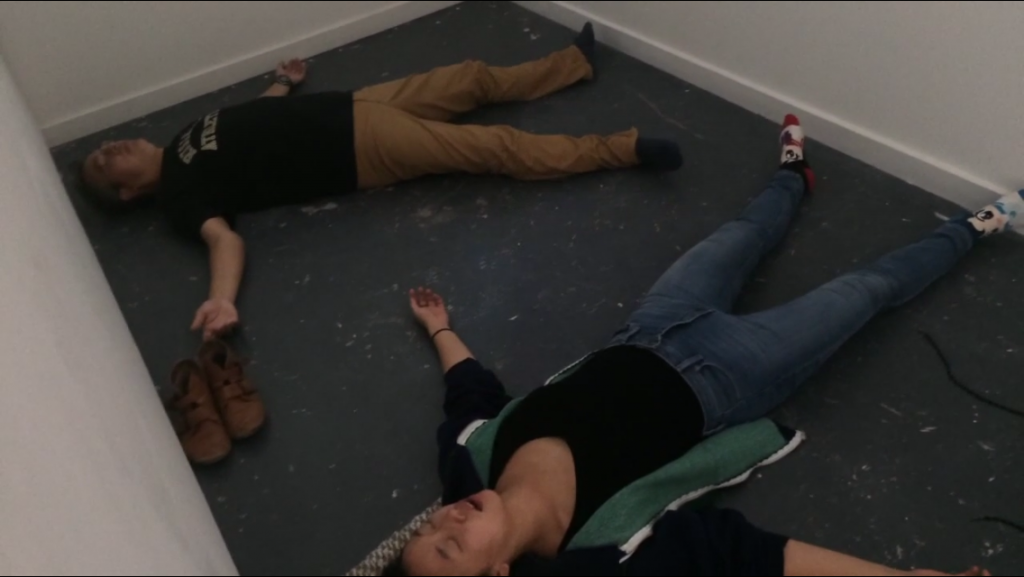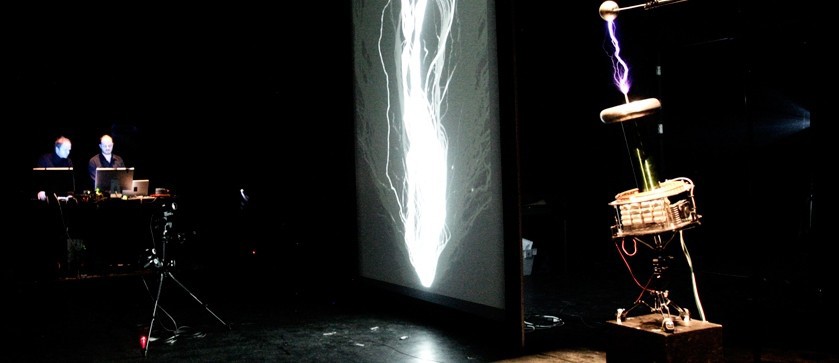
MUFFINS. The food of true artists, as I was told in dance school. This lesson— I choose to remember. I sit with my favourite Morning Glory at my everyday cafe after dance class. Laptop aglow. I work hard on this muffin top. So moist.
I muse about my relationship to technology in live performance, as a contemporary dance artist. I have spent the last few years integrating multimedia (ie. computer-generated light, sound, projection) into my work through collaboration with media artists. There’s many reasons to become competent with multimedia design on my own. It would substantially expedite my creation process. I would fight less with my collaborators. The technology and tutorials are extremely accessible. The field is in desperate need of more female representation. Not to mention, if you Google Jobs That Pay $100K a Year Without a Degree, you’ll find multimedia artist comes up as sixth on a list of thirty-five. Despite this, I am aware of my innate apprehension to becoming multimedia-savvy. A subtle but relentless waft of aversion.
SEX. I realize now I prefer to write about sex. Maybe I can meander my way from technology to my preferred topic. Facebook friends chimed in on my wall with ideas. Many offered up suggestive descriptions of banal tasks, like “plugging in” USB keys, or “turning on” electricity. Techroticism, I’ll call it. Aside from the innuendo, people seem to believe that technology is mostly about sex anyway, that our interactions with it are laden with sexual gestures and motifs. Wait. Does mere sex simulation = sex? Seems a bit lacking in pleasure, not to mention interpersonal intimacy. I think about sex toys. Cutting-edge sex toys. Future sex technology will obliterate the limitations of the human body, offering up the possibility of super-orgasms, eternal libido, long-distance stimulation, body-hacking, sensation-exploding, choose-your-own-anything. Everything. For some reason, none of the above makes me wet. Not even moist.

BODY. I hosted an artist talk with acclaimed Hong Kong visual/theatre artist Josh Hon in Chinatown’s Centre A Gallery. Days before, we sit at a cafe with muffins. We talk about creating and experiencing work that has “heart”. We ask each other what that means, and that leads to a deeper conversation about embodiment.
I see how multimedia innovation will replace the need for the human body as the site for expression, which I can’t help but lament. I think of this when at the MUTEK Cabaret as part of the International Symposium of Electronic Art (ISEA) in 2015. I watch high-voltage electromagnetic arcs surprise and stir me viscerally. I also watch the performing bodies on stage hovered over wires and remotes, hidden behind computer screens. I think: Can multimedia evoke embodiment better than the body? It’s a self-absorbed corporeally-centric question, but let me provide some context why.
I was put through the wringer of formal dance education, where bodies are generally trained to be efficient, consistent, machine-like, all-competent, fully-controlled. This left a couple of things out of the picture— namely, questions. Questions like: What is my curiosity? Where does it sit in my body? Who’s dance am i dancing? It took four years into post-secondary studies before I even began noticing the terribly white, colonial, exclusive history of the dance being taught. What contemporary dance training taught me was how to hide, how to feel shame about my body, and how to dance in the Palace of dead white folk.
Years later, my work as a dance artist is to un-learn. To train out the machine. To decolonize my thinking, and reclaim my body. To do so, I practise drinking, smoking, and then dancing madly in clubs to explore: 1) excessive cardio and duration 2) performance of gender and sexuality 3) improvisation with and against the beat of 90’s R&B 4) finding and then losing myself. My practice includes a warmup inspired by Fitzmaurice Voicework, where body, breath, voice, imagination, language, and presence are accessed. Fitzmaurice places the body in positions that elicit “tremors”; these encourage a destructuring of the breath, and a restructuring and strengthening of the voice via vulnerability. My practice includes sex and being seen. It includes a cocktail of contact improvisation, somatic practice, and presence work in order to be available to impulses. All this with the intention of being more available to collaborators, to audiences, and, to partners in coitus.
Given the mechanized, automated body I’m trying to shed, I can see where my aversion to slouching into a computer-based practice might be stemming from. Considering the energy I commit to embodiment, I naturally resent the idea of bodies being replaced by technology. And I probably despair of my own body becoming obsolete.

FUZZ. You know what happens to me, when people start getting into dirty technology talk? Gushing about software, programming, new gadgets? I zone out. In a society that is mediated and reliant on computers of all shapes and sizes, I think about how this is atrophying our bodies, our public and private spaces, our minds. My mind gets claustrophobic with fuzz— the fuzz of being plugged in, but taken out. Taken out of my ability to be with me and to be with someone else. Not only does it then take much more energy to engage in my somatic practice, but it also just feels damn unsexy.
PRESENT-NESS. I think about about innovation in performance. I think about the present, not the future. Maybe this is my downfall. Maybe this will make me the first to be replaced by a robot vacuum. But as a dance artist and as a human, I’m enamoured with the body, its histories, and its limitations. I am deeply preoccupied with the quality, frequency, and texture of the moments we can have together now. Sometimes I feel like it’s the most radical and healing thing we can do.
I am not denying that every aspect of my art-making process is made more efficient with technology— from the grant-writing, to the video editing, to the thirty-minute load-in on opening day. I am not denying that technology allows me to find and connect with people. But here’s what I know. Technology has yet to make me better at sex. It hasn’t made me better at being vulnerable and intimate with someone. What has, is my daily efforts to decolonize my practice and reclaim my body. I will continue to play nice with technology in and outside of my creative work— I have little choice. In Adrienne Wong’s words: the robot revolution is inevitable. But until the robots start parading in to take over, I resist becoming one.









